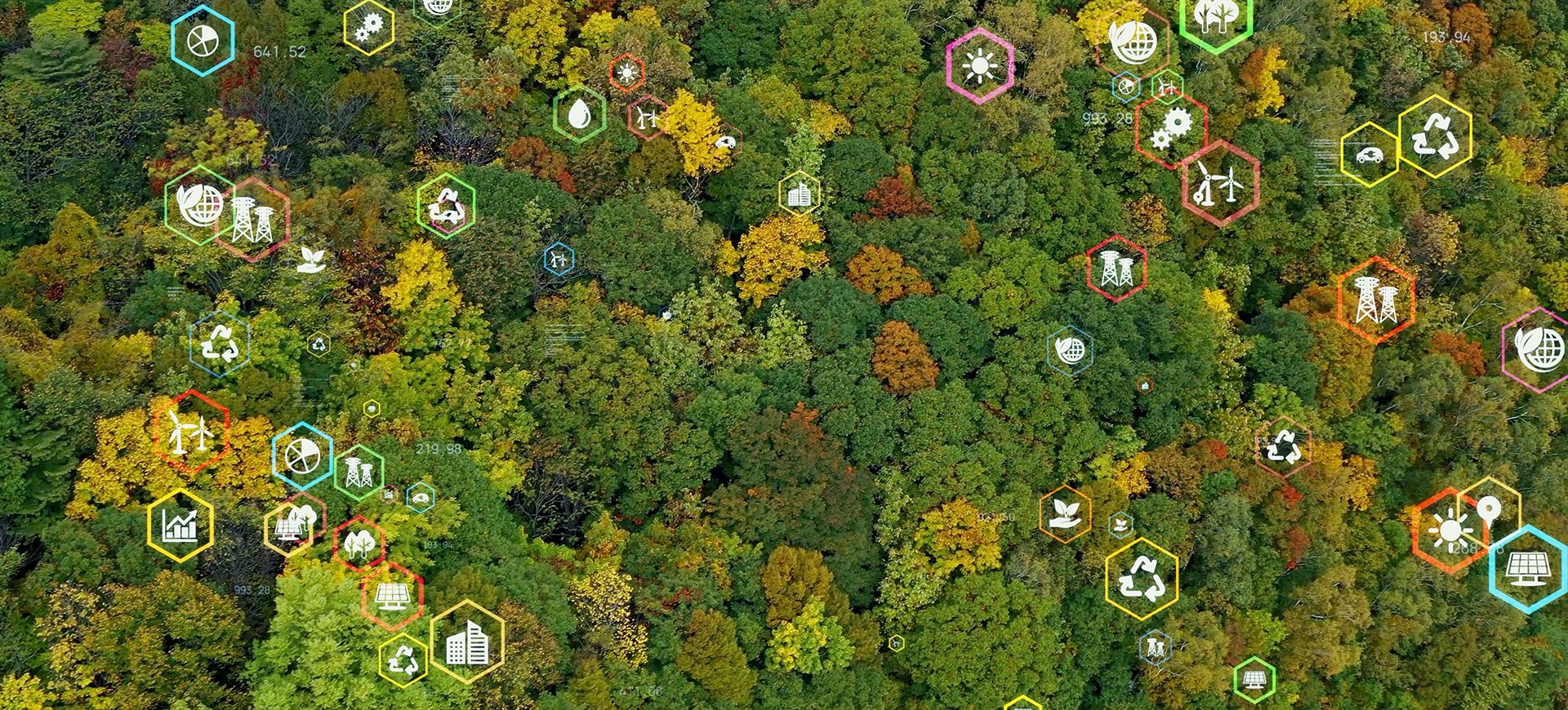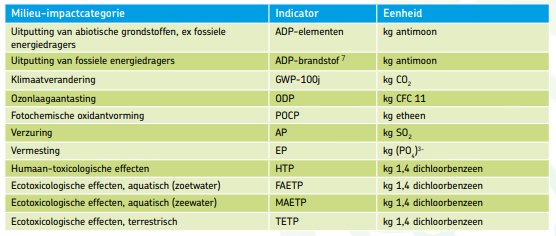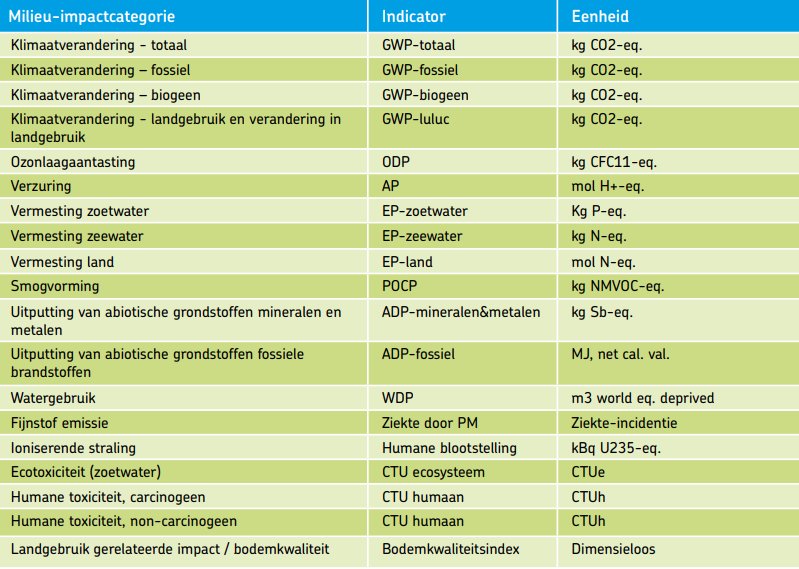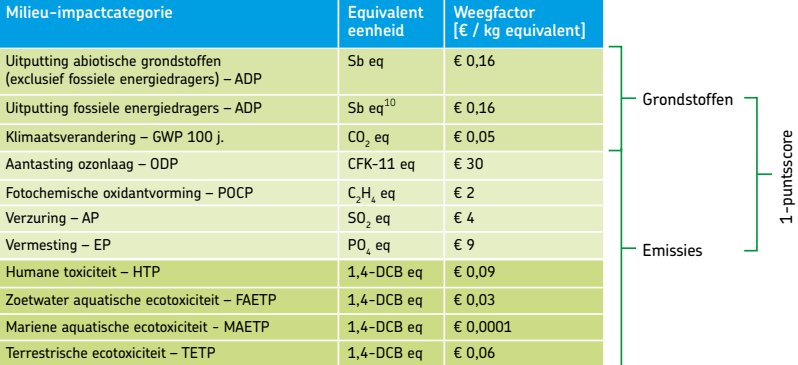From 11 to 19 environmental impact categories
In 2020, the Assessment Method underwent a major overhaul. In that year, the SBK Assessment Method Environmental Performance of Buildings and GWW Works was replaced by the first version of the Assessment Method Environmental Performance for Construction Works.

The ultimate goal of the Acceleration Action is that set A2 applies to all environmental declarations and basic profiles in NMD. In the first quarter of 2023, Stichting NMD will carry out an analysis to determine whether it is actually possible to perform the environmental performance calculation with data based on set A2.
The Assessment Method Environmental Performance for Construction Works (we are now working with version 1.1 and will be referred to as the Assessment Method) underwent a number of important changes as a result of the amendments to EN 15804, the European standard that forms the basis for the Dutch Assessment Method.
New set of environmental impact categories
The main change was to update the setting of the environmental impact categories of acidification, eutrophication, summer smog, human toxicity and ecotoxicity, among others. With EN 15804+A2:2019, these are now based on up-to-date scientific methods and align with the Product Environmental Footprint (PEF). This is a method embraced by the European Commission to determine the environmental performance of all products and therefore also applies to construction products. It led to the introduction of a completely new set of environmental impact categories. While the old set includes 11 environmental impact categories, the new set has 19 categories. Compared to the old set, the new set is divided with sub-indicators and indicators have been added. See the tables below showing set 1 and set 2.
The new classification and expansion of categories affects the environmental profile (the sum of all environmental impacts) of the construction products and building materials considered. With the change in the environmental profile, the ECI score of the building material or product also changes, as the ECI is a numerical representation of the environmental profile.
Two sets at the same time
This meant that all environmental declarations and base profiles in the Dutch National Environmental Database had to be revised. They had to be reconsidered and recalculated. The conversion would be less complicated if the NMD consisted only of category-3 environmental declarations managed by NMD Foundation. But in addition to category-3 declarations, there are also category-1 and category-2 declarations of companies, suppliers and industries. These environmental declarations have a validity of five years and may not be removed from the NMD in the interim. For these environmental declaration owners, the conversion to the new set is extensive, labour-intensive and has financial implications. Therefore, the conversion could not be realised overnight. The NMD Foundation therefore decided to include both the old set of environmental impact categories and the new set in the Assessment Method. The old set was referred to as 'set 1', while the new set was named 'set 2'. With the entry into force of the Assessment Method on 1 January 2021, it became mandatory to submit two sets of environmental data, one based on EN 15804+A1 (set 1) and one based on EN 15804+A2 (set 2).


Transition scheme
In addition, there were also technical problems in converting certain raw materials and semi-finished products whose basic profiles did not comply with the new Assessment Method. Examples were concrete and timber. For concrete, the cement profile did not comply with the new Assessment Method. Similarly, the environmental declarations for sawn timber and dried timber did not comply. These products were subject to a one-year transition scheme. The Transition scheme has now been extended to 31 March 2023.
Acceleration campaign
To encourage the owners of environmental declarations and basic profiles to update their data and bring it in line with set 2, Foundation set up a compensation scheme. The 'Acceleration Campaign' was deployed for companies and industry organisations that had based their environmental data on set 1 and whose environmental declarations and basic profiles were still within the five-year validity period. A total of 341 category 1 and 2 environmental declarations are to be renewed with set A2.

So far, 227 environmental declarations have been registered for the Acceleration campaign
The Acceleration campaign was released in 2 rounds. The first round targeted those organisations that published their environmental declarations between 1 August 2017 and 31 December 2017. The second round specifically targeted those organisations that published their environmental declarations between 1 January 2018 and 31 December 2020. The application period for the Acceleration Campaign has now closed.
Data owners with environmental declarations from 2017 (round 1) were given until 31 December to update their environmental declarations to set A2. However, it turned out that the time available to carry out the update was not sufficient. Therefore, NMD Foundation has decided to give the owners of environmental declarations and base profiles until 24:00 on 30 April 2023 at the latest to incorporate their updated data into NMD. Until this time, the old environmental declarations will remain active in NMD.


The ultimate goal of the Acceleration campaign is for set A2 to apply to all environmental declarations and basic profiles in NMD. In the first quarter of 2023, NMD Foundation will carry out an analysis to determine whether it is actually possible to perform the environmental performance calculation with data based on set A2.
Weighting factors
The conversion from set 1 to set 2 has not yet been completed. Until now, the MPEs and ECIs are calculated at the construction level using the old set, set 1. To express the environmental profile in a 1-point score (the MPEs/MKIs), a weighting factor needs to be determined for each environmental impact category.

The weighting factors are based on a 'shadow price' that indicates the cost to the government of neutralising the environmental impact of the construction work or construction product in question. The shadow price is therefore expressed in euros. The weighting factors for set 2 have not yet been determined. A study on a proper basis for the weighting set is underway. As soon as the outcome of the study is known, Stichting NMD will report on it. For now, the weighting factors for set 1 apply and the ECIs and MPE are calculated based on set 1.
Read more:
